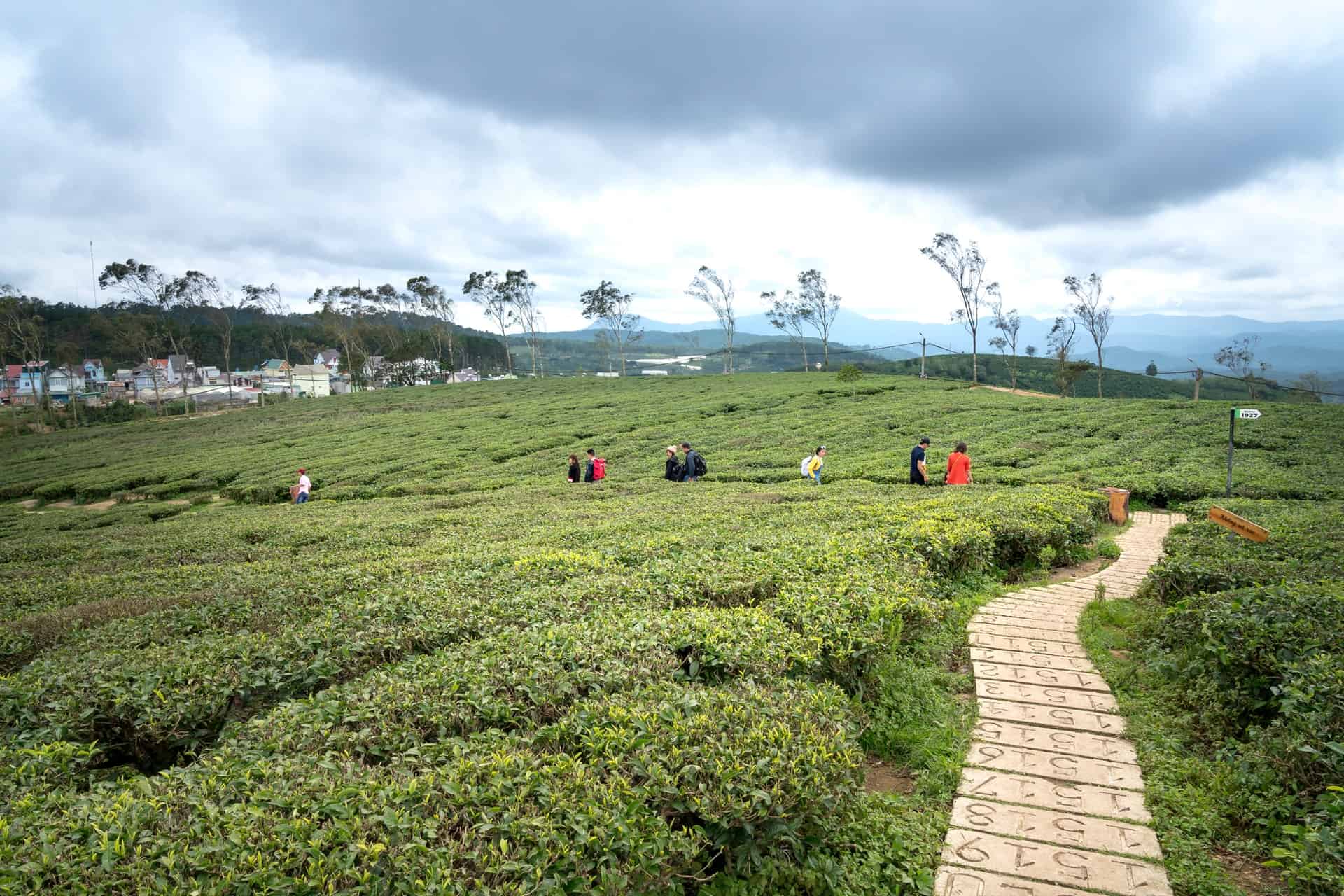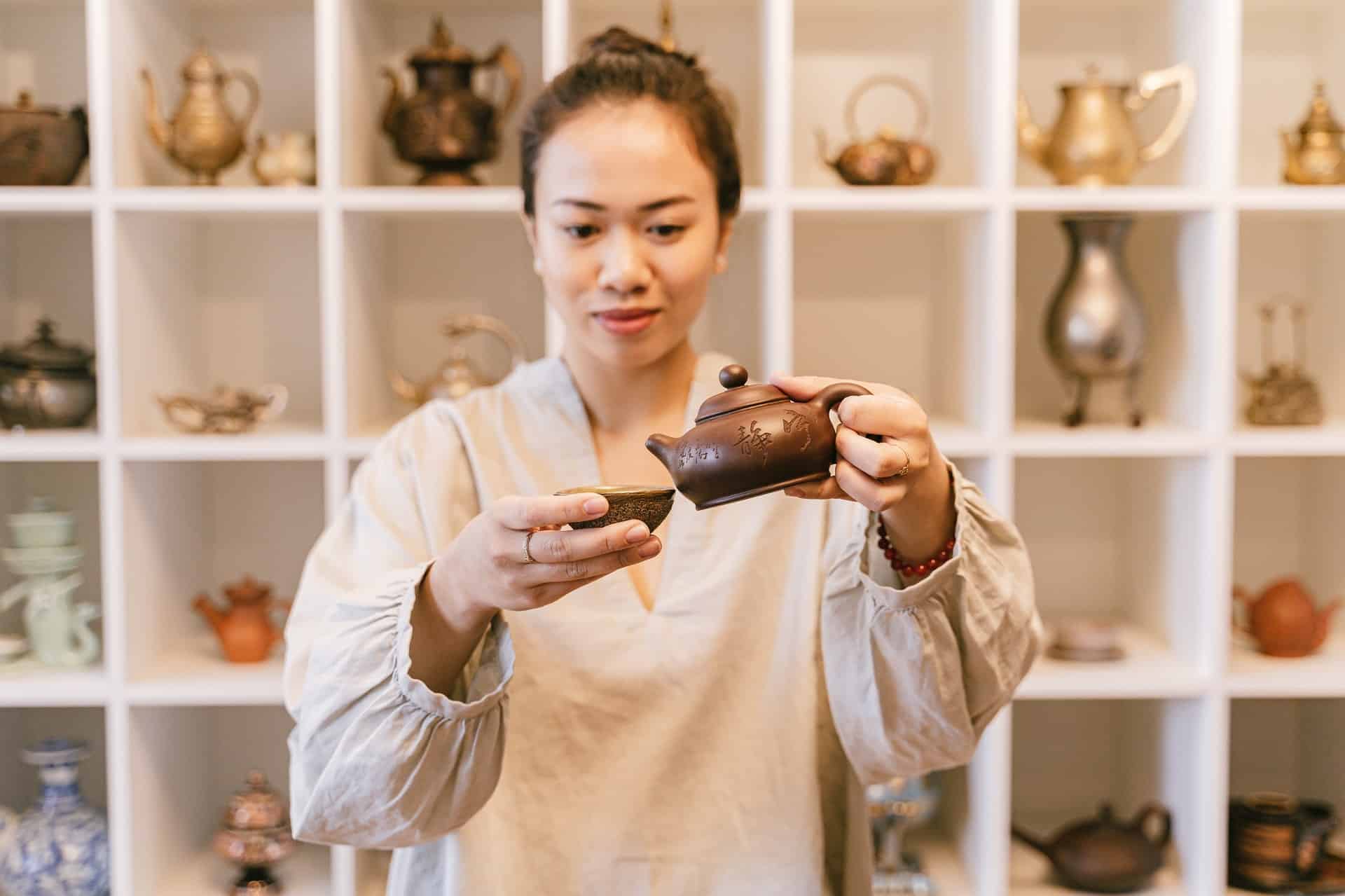From the fields to the table has always been of interest to me and to see it on the other end as something to do with my beloved cup of tea. I’m all in. Clean eating and clean drinking can only be better for anyone participating in its endeavors. To narrow down our sustainable drinking from the tea fields to the teacup is just one way we drink better teas and help save our planet.
Together, let’s journey into the aspects of the tea fields to the teacup. Your teacup. Let’s learn more about the efforts and rewards of tea farming.

The journey begins
How often do you think about the journey the tea leaves made to get into your cup? Where did the journey from? What country, state, farm, or the plantation?
What process did those tea leaves go through to make that perfect cup of tea? From growth to cup and then cup to table. What really happens and who makes it happen?
I was pleased to visit a tea plantation in South Carolina. The Bigelow Tea Plantation is touted to be the ONLY one in the United States. I am not sure what they are starting to be as “only”. I know several other plantations across the country. But it is what’s stated on the signage.
I was able to journey as a tea leaf from the fields and through the process as if I myself were to become tea. It’s definitely a process and when done well brings you to their showroom of tea-filled shelves.
That plant, the Camellia Sinensis. That singular plant brings us hundreds of different tastes. The tea plant is more like a bush or shrub. Every tea you drink comes from that singular plant. Do not become confused with any herb, spice, or other plants. There are only one tea and one tea plant. There are all infusions or tisanes.
It’s sort of how we call all tissues Kleenex or all petroleum jelly like Vaseline. All things infused in hot water are not tea. Only tea is tea
The rest is completely different. Today we focus on tea. The journey from tea field to cup.
From the field
There are a few steps to get that tea to your cup and it all begins in a field, a field of green. Sometimes on hills and valleys or in mountains or flat plains.
How do the tea plants get into our cups? First, it’s the tea leaves that are harvested but before that, they must be:
Cultivated
To cultivate something is (according to Websters) the act of growing something or improving its growth.
With tea, there are different growth cycles as well as seasons in which to cultivate. Some tea plants are even shaded for a period of time before harvesting. Teas will taste unique to where they are cultivated. The area is unique creating an individual and unique flavor.
A tea plant is generous, it keeps on giving, for years if not decades. Once you have a good plantation or tea farm going you are in for the long run. Your tea plants will continue to grow and flourish.
The land, the water that flows through or around, the air quality, the humidity, the use of chemicals or not. So many cultivating practices go into our tea bush to make that cup of tea.
Once the farmer has decided on his planting area. After he has considered land, soil, air, drainage, minerals, and nutrients. It’s time to plant. The product of his planting will be the tea leaf.
The farmer has cared for his land and his tea plants and now is the time he has worked so hard for:
Harvesting
To harvest is to collect what has been planted or grown in the ground.
Harvesting tea is a time-honored tradition. There is a lot of hustle and bustle then there is even more pause and wait. The teas that you choose have different harvesting needs. Some use just the top three leaves, some use the bud and leaf or two. Even more, harvested machines and the special teas are harvested by hand.
Generally, a tea plant must be around 4 to 5 years before its first harvest.
Harvesting by hand is a talent of precision. These teas will cost more because there are more people to take care of in the harvesting and processing of your tea.
Harvesting by machine has a lower cost but less precision.
Do you know how your tea’s harvested? If not you can easily contact and ask if a machine or a person picked your tea. I often thank the hands that have picked and prepared my teas.
When harvesting the farmer needs to know what part of the tea plant that they need. The tip of the plant is younger (newer). Age does matter and the taste develops from those different aged leaves.
There are classes to harvesting:
Fine – the top bud of the plant, the next two leaves, and that stem. This can be known as “two and a bud”.
Coarse – leaves plucked from below the Fine pickings. These can be known as “three and a bud” or four and a bud”.
Timing is everything. If you miss the harvest time, it’s missed and there are no 2nd chances.
Once the tea leaves are picked the next step is to:
Process
From the tea farmer to the tea picker the leaves now go to the tea maker.
The tea maker handles the next few stages your tea will go through:
Withering – the leaves of the tea plant (like any plant) once plucked will begin to wither. Depending on the type of tea that is being processed withering will be a deep or a light project. Black teas wither for up to 24 hours. Green teas are desired with as little withering as possible. Withering begins the process of creating the perfect tea.
Heating – After the tea leaves have withered heat is used to further process the teal leaves. Some heat is natural for the sun while others are heated in large metal bowls. Heating stops the breakdown of the compounds of the leaf. Teas that are processed lightly have a more green or grassy flavor. It would make sense then that tea leaves heated longer have a darker or roasted flavor.
Rolling – from withering to heating our tea leaf is now tough enough to resist being broken. Tea leaves can be manipulated now. Rolling releases the flavor of the tea leaf. Rolling is done by hand. Tea leaves are held in the hand in bunches and rolled along a tabletop. Machine rolling is done between metal plates that move across the tea leaves.
The hardest part of this job is to know when it’s just enough time to release all the yummy tea flavors. Too much and the teas will display a not-so-aromatic scent or flavor. Just enough and the tea leaves are not dry but a bit on the oily side with the scent of floral, nutty, or fruity flavors.
Now the tea leaves:
Rest – The resting period is known as oxidation. Oxidation has (of course) different times for different teas.
Drying – The final stage of the process is drying. Once the tea leaves are brought to the exact time of their oxidation they are dried, the drying then preserves the process and the flavor. Drying can be by an oven or the sun. Either way, the oxidation is stopped and at that point, your tea is what it will be.
Prepping and Packing – your teas are finally ready to be packed. This process will vary depending on the tea. Is it a loose leaf tea or will it be bagged? Some teas are full leave others are cut or torn. The teas are then put into their boxes and shipped.
We have a personal love for and belief in the warmth and health enriching powers of a good cup of tea
To cup
The process is long and hard at times. It’s just not as easy as plant a seed and watching it grow! There are a lot of people (and hands) involved in creating that cup of tea.
Conditions have to be right. A field can be wiped out in a season. The balance of earth, wind, fire (sun) are practically the lifeline to the perfect cup of tea.
Knowledge being the 2nd most important ingredient. Thankful that the farmer knows the perfect place that has the utmost perfect soil. That he knows the timing to harvest and he is right on top of the process. It begins with him.
It ends in your cup. That tea you are drinking came from a community of teamakers, pickers, farmers, and processors who had you in mind.
I’m hoping this article will help you remember them as you sip on your cup of tea!
It’s sort of a big deal!

Conclusion
I’m the CEO of ‘What’s in your cup”. I share with people what tea I am drinking and love to know what is in their cup. The tea community is far and wide. It’s an honor to share with you and learn alongside you.
Next time you pour a cup of tea, take that moment. Stop, close your eyes, inhale, and imagine this:
Remember all the effort it took to get that tea from field to cup? Then share the good news of tea with your friends. Smile and know a community of tea lovers are out there, just like you.
So, really.. .what’s in your cup today?



